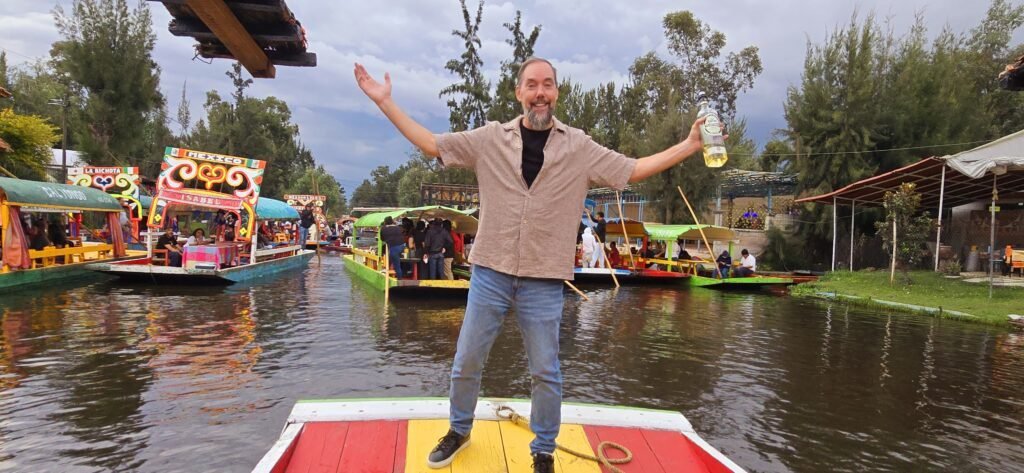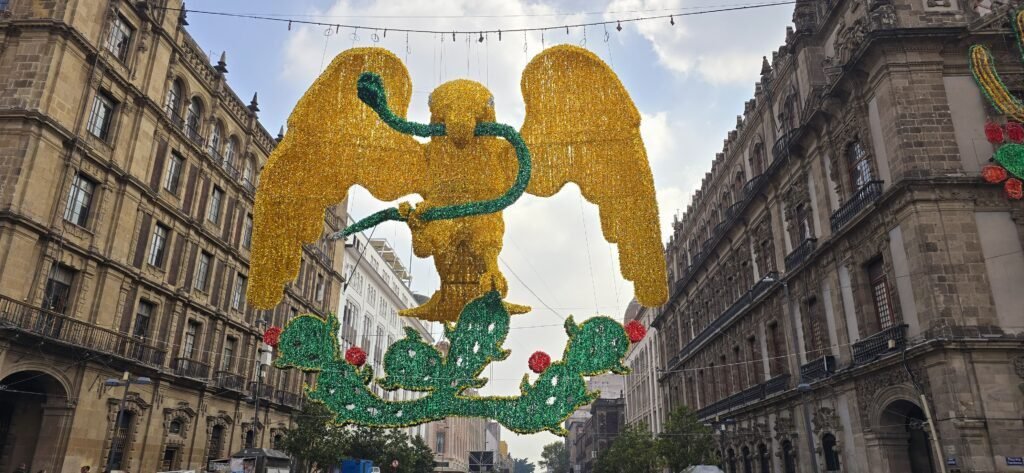Mexico City, or CDMX (Ciudad de México), is a vibrant and sprawling metropolis that blends centuries of history, diverse cultural influences, and a modern cosmopolitan atmosphere. For tourists, it offers an unforgettable experience of contrasts—where ancient ruins, colonial architecture, and cutting-edge art coexist. Here are the highlights:
Zócalo Public Square – The heart of the city’s historic center, the Zócalo is one of the largest public squares in the world. Surrounding the plaza are iconic landmarks like the National Palace, home to Diego Rivera’s murals, and the Metropolitan Cathedral, one of the most important religious buildings in Latin America. Just behind it lies the Templo Mayor, the ruins of the ancient Aztec capital, Tenochtitlan.
Chapultepec Park (Bosque de Chapultepec) and Castle Chapultepec– One of the largest city parks in the world, is home to a wide range of attractions including Castle Chapultepec, the only royal castle in the Americas, with stunning views of the city and exhibits on Mexican history.
Anthopolgy Museum – The National Museum of Anthropology (Museo Nacional de Antropología) houses one of the most impressive collections of pre-Columbian artifacts, including the famous Aztec Sun Stone.
Palace of Bella Artes – Beautiful cultural center with amazing murals and art exhibitions.
Xochimilco – Famous for its trajineras (decorated boats), Xochimilco offers a unique experience of Mexico City’s ancient waterways. Visitors can enjoy colorful boat rides while listening to live mariachi bands and snacking on traditional Mexican food.
Plaza Garibadi-outdoor plaza to relax, have bite and listen to the mariachi bands.
Frida Kahlo Museum – Frida Kahlo’s former home showing her life story and art work.
Lucha Libre Wrestling – energy filled pro wrestling matches.
Torre Latin America– observation area to get a birds eye view of Mexico City.
Nightlife & Restaurants- Mexico City is a gastronomic paradise. You’ll find everything from street food stalls serving tacos al pastor, elotes, and tlayudas, to internationally acclaimed restaurants. The city’s food scene also includes traditional markets like Mercado de San Juan, known for its exotic ingredients, and Mercado de la Merced, one of the largest markets in Latin America.
Zocalo Square - Templo Mayor and the Metropolitan Cathedral

Mexico City’s Zócalo (Plaza de la Constitución) is one of the largest public squares in the world and serves as the heart of the city’s historical and cultural life. The plaza is surrounded by important government and religious buildings, including the National Palace and the Metropolitan Cathedral. It’s a hub for public events, celebrations, and protests, often filled with street vendors, musicians, and performers. The Zócalo’s vast open space is sometimes used for large cultural events or exhibitions, reflecting the city’s rich history and its role as a modern political center.

The Metropolitan Cathedral (Catedral Metropolitana de la Asunción de la Santísima Virgen María a los cielos) stands on the northern side of the Zócalo and is a stunning example of Spanish colonial architecture. Built over a span of several centuries starting in 1573, the cathedral blends various architectural styles, including Baroque, Renaissance, and Neoclassical. Its towering bell towers, ornate altarpieces, and grand interiors make it one of the most impressive cathedrals in Latin America. Inside, visitors can see intricate chapels, religious art, and the stunning Altar of Forgiveness (Altar del Perdón). The cathedral is built on the ruins of the Tenochtitlan temple, symbolizing the Spanish conquest of the Aztec Empire.



Templo Mayor is the archaeological site located just steps away from the Zócalo and the cathedral. It was the main temple of Tenochtitlan, the capital of the Aztec Empire, dedicated to the gods Huitzilopochtli (god of war) and Tlaloc (god of rain). The temple was destroyed by the Spanish in 1521 during the conquest, but excavations in the 20th century uncovered significant portions of the structure and artifacts. Today, the Templo Mayor Museum (Museo del Templo Mayor) showcases a fascinating collection of Aztec relics, including ceremonial objects, sculptures, and offerings. Walking through the site offers a glimpse into the spiritual and ceremonial life of the Aztec civilization.
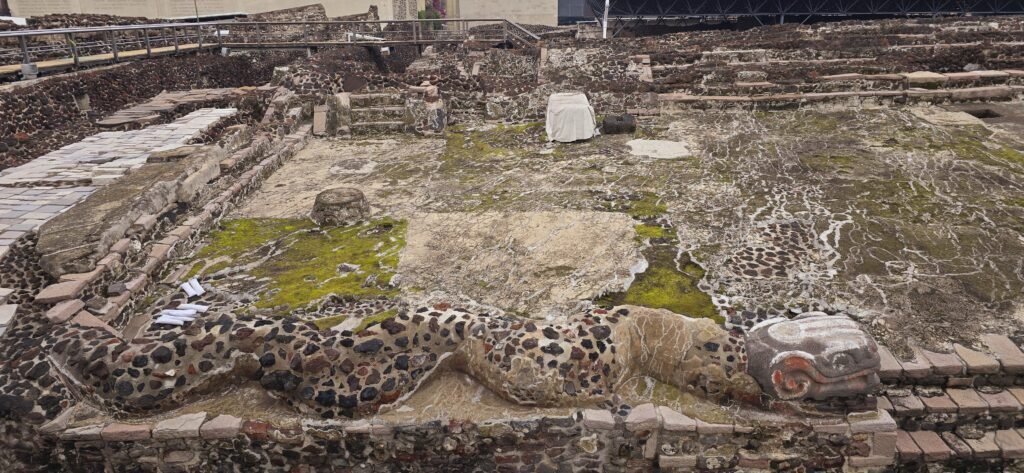

Park Chapultec and Castle Chapultec
Chapultepec Park (Bosque de Chapultepec) is one of the largest and most important urban parks in the world, located in the heart of Mexico City. Known as the “lungs of the city,” this vast green space covers over 1,600 acres and offers a wide range of cultural, historical, and recreational activities for both locals and tourists. One of the park’s most iconic landmarks is Chapultepec Castle, which sits atop Chapultepec Hill, offering spectacular views of the city and housing the National History Museum.
Chapultepec Park (Bosque de Chapultepec)
Chapultepec Park is often compared to Central Park in New York City due to its size and significance, but it has a much longer history, dating back to pre-Columbian times when it was a retreat for the Aztec rulers. The park is divided into four sections, with the first section being the most visited and the location of many of the city’s major attractions.
Chapultepec has several lakes where visitors can rent rowboats and paddleboats, the most famous being Lago Mayor. The park also has beautifully landscaped gardens, including the Botanical Garden and the Jardín de la Tercera Edad, which provide serene spots for walking and relaxing.
Chapultepec is also home to some of Mexico City’s most important museums, including:
- National Museum of Anthropology (Museo Nacional de Antropología) – A world-class museum with extensive collections of pre-Hispanic artifacts, including Aztec, Maya, and Olmec treasures.
- Museo Tamayo – A contemporary art museum that houses works by Rufino Tamayo and other international artists.
- Museum of Modern Art (Museo de Arte Moderno) – Features a diverse collection of Mexican modern art, including works by Frida Kahlo, Diego Rivera, and José Clemente Orozco.



Chapultepec Castle (Castillo de Chapultepec)
Perched atop Chapultepec Hill, Chapultepec Castle is one of the most unique and historically significant landmarks in Mexico. It is the only royal castle in the Americas and was once the residence of Emperor Maximilian I and Empress Carlota during the Second Mexican Empire. Today, the castle houses the National Museum of History and offers panoramic views of the city.
The castle’s origins date back to the late 18th century when Viceroy Bernardo de Gálvez ordered its construction as a summer home for the Spanish colonial government. It later became the official residence of the Mexican Emperor Maximilian I and Empress Carlota in the mid-19th century.
Following the fall of the empire, Chapultepec Castle became the presidential residence and served as a military academy. The castle is perhaps most famous for its role in the Mexican-American War (1846-1848), when it was the site of the Battle of Chapultepec. The Niños Héroes, six young cadets, died defending the castle, becoming national heroes.
The castle now serves as the National Museum of History (Museo Nacional de Historia), where visitors can explore exhibits on Mexico’s history from pre-Columbian times through the Mexican Revolution. The museum is divided into two main sections: the historic rooms and the exhibition halls.
The historic rooms are preserved as they were when Maximilian and Carlota lived in the castle, showcasing period furniture, artworks, and decor that offer a glimpse into the luxurious lifestyle of the imperial court.
The museum’s exhibits halls cover various periods of Mexican history, including the Spanish conquest, the colonial period, independence, the Mexican Revolution, and the 20th century. There are artifacts, documents, paintings, and items related to Mexico’s military and political history.
One of the castle’s highlights is the stunning view of Mexico City from its terraces. Visitors can take in sweeping vistas of Chapultepec Park, the city’s skyline, and beyond. This is one of the best spots in the city for photos, especially at sunset.
The castle is surrounded by beautifully manicured gardens, filled with statues, fountains, and paths perfect for a leisurely stroll. The Alcázar Gardens, in particular, are a favorite for visitors, with their lush greenery and classic European design.
The park is open daily, but the castle and museums have specific hours. The National Museum of History (in Chapultepec Castle) is open from Tuesday to Sunday, typically from 9:00 AM to 5:00 PM. Admission is



Anthopolgy Museum
The National Museum of Anthropology (Museo Nacional de Antropología), located in Mexico City’s Chapultepec Park, is one of the most important and renowned museums in Mexico and the world. It houses an extensive collection of artifacts from Mexico’s pre-Columbian civilizations, making it a must-see destination for anyone interested in the country’s rich indigenous history and cultural heritage.
Opened in 1964, the museum is famous not only for its vast collections but also for its stunning modernist architecture. The building’s most iconic feature is the central courtyard, covered by a large concrete “umbrella” (known as “El Paraguas”) supported by a single pillar, which creates a dramatic visual effect and provides shade to the open-air space below.
The museum’s collections are arranged in a series of halls that cover various Mesoamerican civilizations, each one dedicated to a specific culture or region. The exhibits are known for their informative displays, detailed explanations, and the impressive artifacts they contain.
Aztec (Mexica) Hall – This hall showcases artifacts from the powerful Aztec Empire, including the museum’s most famous piece, the Aztec Sun Stone (Piedra del Sol). Often mistakenly referred to as the “Aztec calendar,” this massive stone sculpture is a cosmological symbol and represents the Aztec universe. The hall also includes statues of Coatlicue, the earth goddess, and Xochipilli, the god of art, dance, and flowers, among many other remarkable pieces.
Maya Hall – Dedicated to the Maya civilization, this hall features intricate stone carvings, pottery, jewelry, and ceremonial objects. Highlights include a replica of the tomb of Pacal the Great from Palenque, complete with its famous sarcophagus lid that features intricate carvings depicting the ruler’s journey to the afterlife.
Teotihuacan Hall – This hall contains artifacts from the ancient city of Teotihuacan, which was once the largest city in the Americas. Visitors can view intricate murals, sculptures, and large-scale reconstructions of pyramids, such as the Pyramid of the Sun.
Oaxaca Hall – Focusing on the indigenous cultures of Oaxaca, this hall includes treasures from the Zapotec and Mixtec civilizations, including gold jewelry and ceremonial masks from Monte Albán, one of the region’s most important archaeological sites.
Gulf Coast Cultures Hall – This hall is dedicated to the Olmec civilization, often considered the “mother culture” of Mesoamerica. It features the iconic Olmec colossal heads, which are giant stone sculptures that have fascinated historians and archaeologists for centuries.
North and West Mexico Halls – These halls cover the indigenous cultures from northern and western Mexico, such as the Tarahumara and the Huichol. The exhibits include ceremonial objects, textiles, and beautiful Huichol yarn paintings, which represent spiritual beliefs and rituals.
The museum is divided into two main sections:
- Ground Floor – The first floor is dedicated to pre-Columbian artifacts and includes 12 halls focused on different civilizations, such as the Aztecs, Mayans, Zapotecs, Olmecs, and Teotihuacans, among others. Each hall is designed to give visitors a deep understanding of the culture’s art, religion, and daily life, with impressive reconstructions of tombs, temples, and sculptures.
- Upper Floor – The second floor is focused on the ethnographic history of contemporary indigenous groups in Mexico. This area highlights the continuing traditions and ways of life of Mexico’s indigenous peoples, offering insight into their arts, crafts, rituals, and societal structures.
In addition to its permanent collection, the museum regularly hosts temporary exhibitions that focus on a variety of topics, from contemporary indigenous art to international archaeology. These temporary exhibitions allow visitors to explore both Mexican and global cultures in greater depth.
The museum offers audio guides in several languages and guided tours to enhance the visitor experience. Many of the exhibits have bilingual explanations (Spanish and English), making it accessible for international tourist.
The museum has a café and a gift shop where visitors can purchase books, replicas of museum artifacts, and traditional crafts. The museum is open from Tuesday to Sunday, typically from 9:00 AM to 5:00 PM.
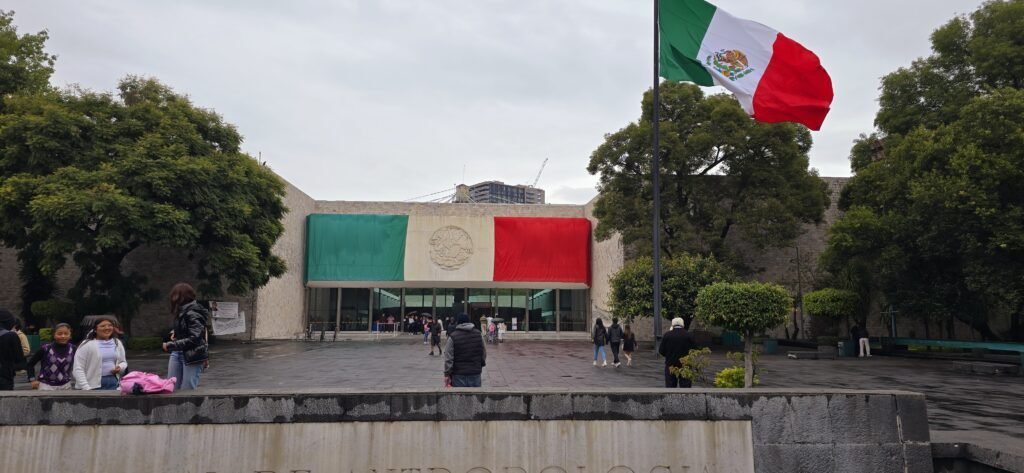

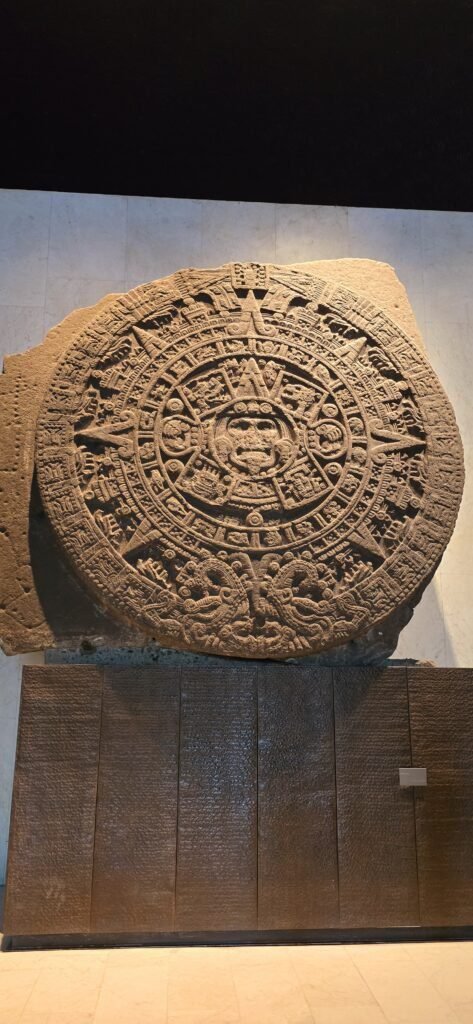

Palace of Bella Artes
The Palacio de Bellas Artes (Palace of Fine Arts) in Mexico City is one of the most iconic and stunning buildings in the city. It is a cultural gem, renowned for its magnificent architecture, which blends Art Nouveau and Art Deco styles, as well as for its role as a premier venue for the arts, including opera, ballet, theater, and visual arts. The building is a symbol of Mexico’s artistic and cultural heritage.
The Palacio de Bellas Artes is a masterpiece of architecture. Designed by Italian architect Adamo Boari and later completed by Mexican architect Federico Mariscal, the building took nearly three decades to construct, with construction beginning in 1904 and finishing in 1934.
The exterior is primarily Art Nouveau, featuring white Carrara marble and elaborate sculptures and carvings. The dome is a standout feature, topped with vibrant yellow and orange tiles that shimmer in the sunlight. Atop the dome sits a bronze eagle, symbolizing Mexican heritage. The building’s overall look combines elements of European design with indigenous symbolism, creating a unique blend that reflects Mexico’s history.
Inside, the Palacio de Bellas Artes is known for its Art Deco design. The interior is opulent and elegant, with polished marble, bronze, and stained glass. The grand foyer features large murals by some of Mexico’s most famous artists, including Diego Rivera, José Clemente Orozco, and David Alfaro Siqueiros. These murals depict scenes of Mexican history, revolution, and social change, adding to the building’s cultural significance.


One of the major attractions inside the Palacio de Bellas Artes is its collection of murals by Mexican artists. These murals, located in the upper floors of the building, are some of the most important works of Mexican muralism, which became a powerful movement in the early 20th century.
The Palacio de Bellas Artes is a hub for the performing arts in Mexico City. It is home to the National Opera Company and the National Ballet of Mexico, and it hosts performances of both classical and contemporary works.
The grand main theater has hosted world-class opera performances and is known for its acoustics and lavish design. Some of the most important Mexican and international operas are staged here.
The Ballet Folklórico de México, a renowned Mexican dance troupe, regularly performs here. Their shows feature traditional Mexican music, dance, and costumes, offering visitors a vibrant and immersive cultural experience.
The theater also hosts symphony orchestras and other classical music performances. Its majestic setting and rich acoustics make it one of the top venues for classical performances in Mexico.
A truly unique feature of the main theater is its magnificent stained glass stage curtain, which was designed by the Tiffany Studios in New York. Made from a million pieces of stained glass, the curtain depicts the Valley of Mexico with its iconic twin volcanoes, Popocatépetl and Iztaccíhuatl. This glass curtain is one-of-a-kind and can be raised and lowered like a normal theater curtain, adding an extraordinary visual element to performances.
In addition to being a performance venue, the Palacio de Bellas Artes is also a museum. The Museo del Palacio de Bellas Artes regularly holds exhibitions of Mexican and international art. Its permanent collection focuses on Mexican art, particularly muralism, while temporary exhibits cover a wide range of artistic styles and periods. Visitors can explore the galleries before or after attending a performance.
The Palacio de Bellas Artes is located in the historic center of Mexico City, near Alameda Central Park, a beautiful green space that is ideal for a leisurely stroll. Cultural Significance
The Palacio de Bellas Artes is more than just an architectural marvel or a venue for performances; it is a symbol of Mexico’s cultural identity. It represents a fusion of European artistic influences and Mexican heritage, reflecting the country’s rich artistic traditions. It is also a center for the preservation and promotion of Mexican arts, from the ancient traditions of folk dance and music to the modern expressions of Mexican muralists.
The Palacio de Bellas Artes offers guided tours that provide detailed information about the building’s history, architecture, and artworks. The tours are available in both Spanish and English.
The museum is open from Tuesday to Sunday, typically from 11:00 AM to 5:00 PM, but performance times vary depending on the event schedule.

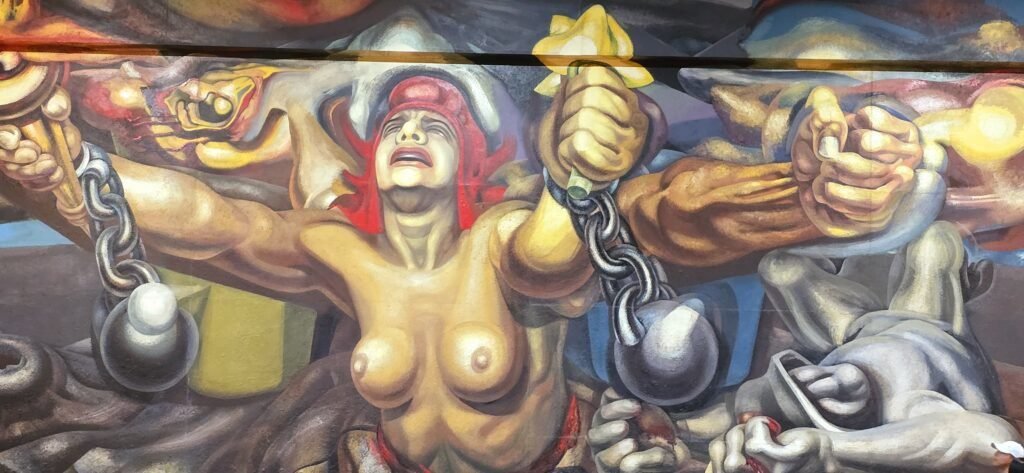
Xochimilco Canals
Xochimilco, located in the southern part of Mexico City, is one of the city’s most unique and colorful attractions. Known for its ancient canals, lively trajineras (decorated boats), Xochimilco offers tourists a picturesque boat ride where they can buy food and drink and even hire a mariachi band for a festive experience.
The Xochimilco canals are the remnants of the vast lake and canal system that once connected various parts of the Valley of Mexico, including the Aztec capital, Tenochtitlan. These canals were used for agriculture, trade, and transport by the ancient inhabitants.
Xochimilco is often referred to as the “Venice of Mexico,” though its charm is more rustic and distinctly Mexican.
The main attraction in Xochimilco is the trajinera ride, where tourists can float along the canals on brightly painted, gondola-like boats. Each trajinera is named after a woman and is decorated with colorful flowers and designs. The boats are large enough to accommodate groups, and tourists can hire one for an hour or longer, depending on how much time they want to spend exploring the canals.
Mariachi, marimba, or other live musicians often approach trajineras, offering to play traditional Mexican songs for a fee, creating a lively and festive atmosphere on the water.
Vendors on small boats paddle up to your trajinera selling traditional Mexican snacks like elotes (corn on the cob), quesadillas, tacos, and tlayudas. You can also buy beverages, including cervezas (beers), micheladas, or even tequila.
Many locals and tourists use the trajineras for celebrations, including birthdays, family gatherings, or even bachelor/bachelorette parties, so the canals are often filled with laughter, music, and festive decorations.



Plaza Garibaldi
Plaza Garibaldi, located in the historic center of Mexico City, is a lively and culturally significant square known for its vibrant mariachi music and deep-rooted connection to Mexican musical traditions. The plaza is a must-visit for tourists who want to experience the authentic sound of mariachi, as well as other forms of traditional Mexican music like norteño, jarochos, and trios.
The defining feature of Plaza Garibaldi is the mariachi bands that line the square, dressed in their traditional outfits, These musicians offer impromptu performances to anyone willing to pay for a song, and you can request classics like “El Son de la Negra” or “Cielito Lindo.”
Plaza Garibaldi comes to life especially in the evening when the square fills with people seeking live music, good food, and drinks. Surrounding the plaza are cantinas, bars, and restaurants where you can enjoy traditional Mexican dishes like tacos, pozole, and enchiladas, often while being serenaded by live mariachi performances.
One of the most popular venues is Salón Tenampa, an iconic cantina that has been around since the early 20th century. This cantina is famous for its long history with mariachi music, and many of the most legendary mariachi musicians have performed there. It’s a great spot to enjoy food, drinks, and, of course, music.
In addition to the music and nightlife, Plaza Garibaldi frequently hosts cultural events, including traditional Mexican dance performances, charro displays (Mexican horsemen), and live music festivals. During special occasions, such as Mexican Independence Day or Día de los Muertos, the square becomes even more lively with additional celebrations and performances.
The best time to visit Plaza Garibaldi is in the late afternoon or evening, when the atmosphere is most lively. While there are mariachi performances during the day, the square truly comes alive at night with music, food, and a festive atmosphere.
Expect to pay around $100-$200 MXN per song, depending on the group and your requests.


Frida Kahlo Museum
The Frida Kahlo Museum, also known as the Casa Azul (Blue House), is one of the most beloved and visited museums in Mexico City. Located in the charming neighborhood of Coyoacán, this museum is dedicated to the life and work of Frida Kahlo, one of Mexico’s most famous and influential artists. The museum is housed in the vibrant blue house where Kahlo was born, lived for much of her life, and died, making it not just an art museum but also a deeply personal space filled with her belongings, artwork, and memories.
The Casa Azul was built by Frida’s father, Guillermo Kahlo, in 1904 and became Frida’s lifelong home. She spent her childhood there and later lived with her husband, the renowned muralist Diego Rivera, during their tumultuous marriage.
The museum offers an intimate glimpse into Frida Kahlo’s life, from her early years to her profound artistic legacy. Visitors can explore the spaces where Kahlo lived and worked, gaining insight into her personal struggles, artistic vision, and her complex relationship with Diego Rivera.
Each room and courtyard reflects Frida’s artistic spirit, filled with her possessions, artworks, and a variety of exhibits that explore different aspects of her life and career.
One of the most iconic spaces in the museum, this is where Frida painted many of her most famous works. The studio is filled with her easel, brushes, paints, and personal items like her wheelchair, offering visitors a direct connection to the artist’s creative process.
The living rooms and bedrooms are preserved as they were during Frida and Diego’s time in the house. Visitors can see the couple’s personal belongings, including Frida’s books, furniture, photographs, and decorative items. The bedroom where Frida spent much of her later life (due to her poor health) contains the bed where she passed away. Above the bed is a mirror, which Frida used to paint her famous self-portraits.
The kitchen, like the rest of the house, is bright and colorful, decorated with traditional Mexican pottery and tiles. It is a testament to the couple’s love for Mexican culture, which is reflected in both their art and lifestyle.
The courtyard garden is a tranquil space filled with lush plants, vibrant flowers, and pre-Hispanic sculptures. The bright blue walls of the house contrast beautifully with the greenery, creating a peaceful atmosphere.
A special exhibit in the museum is dedicated to Frida Kahlo’s iconic wardrobe. After her death, her personal clothing was locked away for over 50 years. In recent years, these items were rediscovered and are now on display. The exhibit features her elaborate, traditional Tehuana dresses, corsets, and orthopedic devices, offering insight into how Kahlo used fashion as a form of self-expression and a way to cope with her physical pain.


While the museum doesn’t house many of Kahlo’s major paintings (many of her works are in other museums around the world), it does feature some original pieces as well as sketches and personal notes.
The museum’s exhibits provide deep insight into Frida Kahlo’s life, particularly her struggles with chronic pain, resulting from a debilitating accident in her youth, and her complex relationship with Diego Rivera. Kahlo’s life was marked by physical suffering, but she used this pain as inspiration for her art, transforming her personal experiences into powerful, surreal, and often deeply emotional paintings.
The museum offers guided tours in both Spanish and English, as well as audio guides that provide deeper context for the exhibits. These guides are particularly useful for understanding the significance of the personal items on display and their connection to Frida’s life and work.
In addition to the main exhibits, the museum has a gift shop where visitors can purchase Frida Kahlo-inspired art, books, clothing, and other memorabilia. The shop offers a wide range of products that pay tribute to Kahlo’s legacy.
You need to buy tickets online in advance, as the museum is extremely popular and can get crowded, especially on weekends.
The museum is typically open from Tuesday to Sunday, with Mondays being a day off.

Lucha Libre- Mexican Professional Wrestling
Lucha Libre, Mexico’s unique and wildly entertaining style of professional wrestling, is a cultural phenomenon that takes center stage at Arena México in Mexico City. Known as the “Cathedral of Lucha Libre,” Arena México is one of the most famous and largest wrestling venues in the world, offering a thrilling experience for fans of this colorful and acrobatic sport.
Located in the Doctores neighborhood of Mexico City, Arena México has been a wrestling mecca since its opening in 1956. With a capacity of around 16,500 seats, it regularly hosts some of the biggest Lucha Libre events, drawing both local fans and tourists eager to witness the high-flying action and the dramatic stories that unfold in the ring.

Torre Latino America
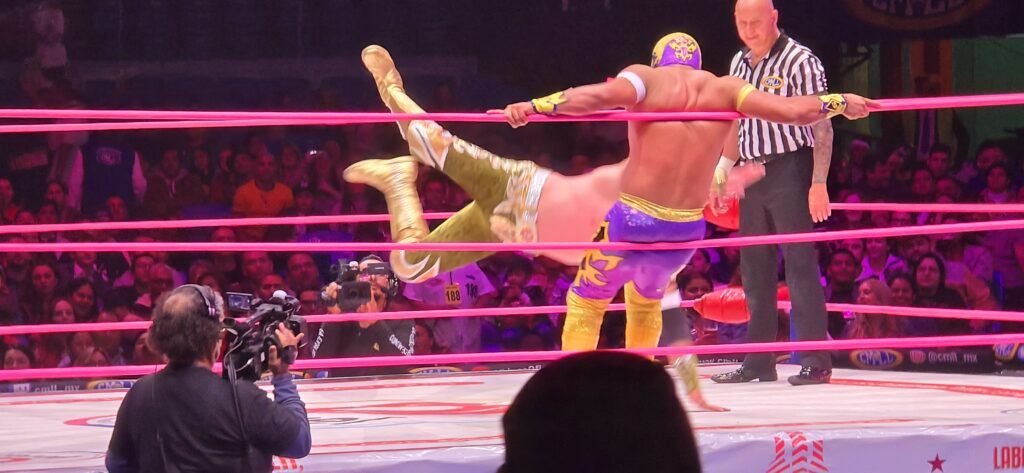
The Torre Latinoamericana is one of Mexico City’s most iconic landmarks and a symbol of the city’s resilience and modernization. Located in the historic center, this skyscraper stands at 182 meters (597 feet) tall, with 44 floors, and offers breathtaking 360-degree panoramic views of Mexico City from its observation deck.
The Torre Latinoamericana was completed in 1956 and, at the time, was the tallest building in Latin America. It became a symbol of post-war Mexico’s ambition and modernity. The tower was an engineering marvel, especially because of its location in an area highly prone to earthquakes.
The top floors of Torre Latinoamericana house a popular observation deck that offers stunning views of Mexico City’s sprawling urban landscape. On a clear day, you can see the city’s landmarks, including the Palacio de Bellas Artes, the Zócalo, and even the distant Popocatépetl and Iztaccíhuatl volcanoes. The observation deck is located on the 44th floor, and there is also a cafeteria on the 41st floor where you can enjoy a snack with a view.
The tower includes a small museum on several of the upper floors that provides information about the history of the building, its construction, and its role in Mexico City’s development. The exhibits also showcase Mexico’s history and culture, with historical photographs, architectural models, and details about the city’s growth over time.
One of the exciting features of Torre Latinoamericana is the glass elevator that takes visitors up to the observation deck. As you ascend, you get a view of the surrounding buildings and streets, enhancing the experience of rising above the city.
On the 41st floor, there is a restaurant and bar where you can enjoy a meal or a drink while taking in the stunning views. It’s an excellent place for a romantic dinner or to relax while watching the sun set over the city.
The tower offers interactive multimedia exhibits that include virtual reality experiences of old Mexico City, showing how the city looked in the past and how it has evolved over the decades.
The observation deck is open daily, typically from 9:00 AM to 10:00 PM, allowing visitors to experience both daytime and nighttime views of the city. Entrance to the observation deck and museum is ticketed, with reasonable prices.


Nightlife & Restaurants
Mexico City’s nightlife and restaurant scene is a thrilling blend of tradition and modernity, offering visitors a diverse range of experiences. Whether you’re looking to dance the night away, enjoy a quiet meal, or savor authentic street food, the city has something to cater to every taste and preference. From upscale dining to lively cantinas and bustling night markets, Mexico City is a culinary and nightlife paradise waiting to be explored.
Mexico City’s culinary scene is a reflection of its diverse culture and rich history, with options ranging from street food to high-end dining. Here are some notable dining experiences:
1. Traditional Mexican Cuisine
El Cardenal: A beloved restaurant known for its traditional Mexican breakfast and lunch options, including chilaquiles, tamales, and delicious fresh-baked bread.
La Casa de Toño: Famous for its authentic Mexican comfort food, particularly its pozole (hominy soup) and tacos. The atmosphere is casual, and it’s a great spot for families and groups.
Café de Tacuba: Not only is this historic cantina a great spot for live music, but it also serves traditional Mexican dishes in a charming setting filled with history.
2. Fine Dining
Pujol: Consistently ranked among the best restaurants in the world, Chef Enrique Olvera’s Pujol offers a modern take on traditional Mexican cuisine, with an emphasis on seasonal ingredients and innovative techniques. Reservations are highly recommended.
Quintonil: Another Michelin-starred restaurant that focuses on contemporary Mexican cuisine, Chef Jorge Vallejo creates exquisite dishes that highlight local ingredients and flavors.
Biko: A fusion restaurant blending Mexican and Basque cuisine, known for its creative and beautifully presented dishes. The restaurant’s elegant setting makes it perfect for a special occasion.
3. Casual Dining and Street Food
Taquerías: Explore local taquerías (taco shops) for authentic tacos. Some popular ones include Tacos El Pastor, Los Cocuyos, and Taco Los Parados, known for their delicious al pastor and other traditional varieties.
Street Food: Don’t miss out on Mexico City’s vibrant street food scene. Look for stalls serving tacos, quesadillas, tamales, and more, often accompanied by fresh salsas and sauces.
Mercados (Markets): Visit local markets like Mercado de San Juan for gourmet ingredients, or Mercado de Coyoacán for a more traditional market experience with various food stalls offering local specialties.
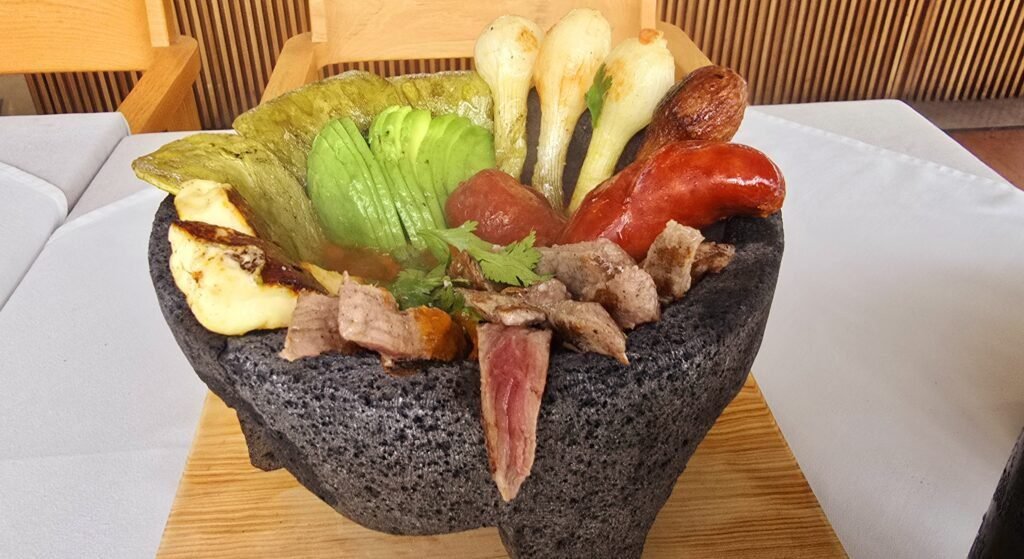

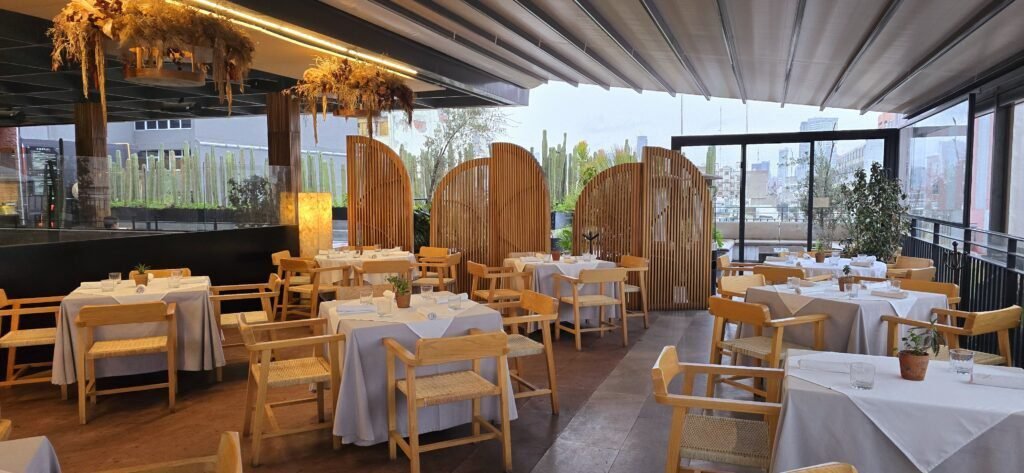




Conclusion
With its rich history, vibrant culture, and culinary scene, Mexico City offers a dynamic experience for every traveler. Whether you’re interested in history, art, food, or nightlife, the city captivates and inspires. Let me know if you have any questions or comments.
